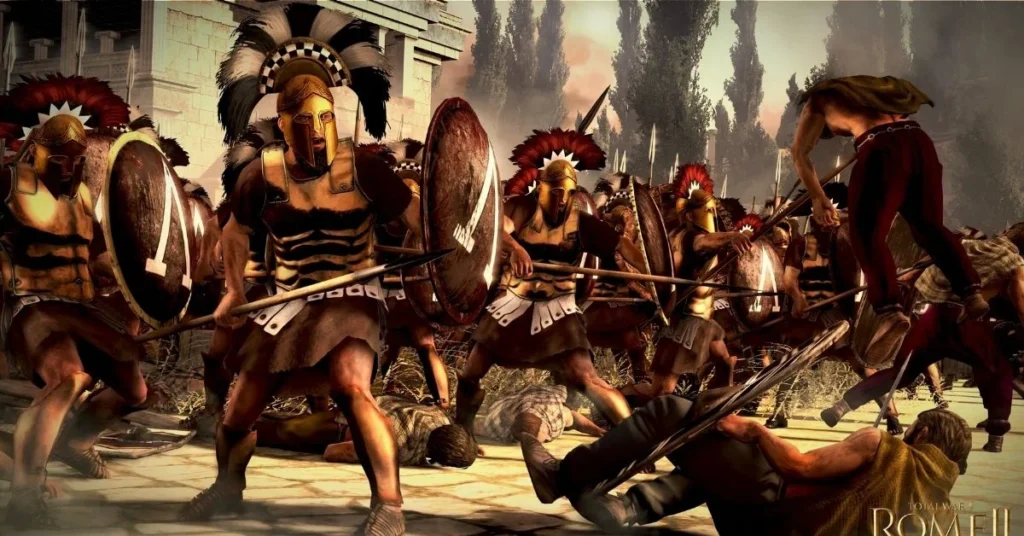Being a Spartan warrior in ancient Greece was tough and special. Spartans were famous for hard training, discipline and loyalty to their city. They gained a fearsome reputation as some of the deadliest warriors ever.
The legendary status of the Spartans in Ancient Greek history gives rise to a question – What was the Spartan diet like and what did they eat to achieve the physical characteristics required to become some of the most notorious soldiers in history?
Spartan Diet in Historical Sources
Herodotus and Xenophon provide intriguing glimpses into the Spartan diet in historical sources. Herodotus highlights the unique treatment of Spartan kings, who received double portions and sacrificial bull meat, yet opted to share their surplus as a gesture of favor with their advisors.

Greek philosopher and historian Xenophon delves further into Spartan dietary practices, emphasizing the agoge’s (Spartan schools) role in providing just enough for boys to avoid excess and scarcity, fostering discipline. Xenophon credits Spartan lawmaker Lycurgus with establishing rations in citizens’ messes, ensuring moderation in both quantity and quality.
While historical records primarily address the issue of quantity, they indirectly emphasize maintaining a balance—ensuring Spartans were neither excessively full nor deprived.
What Did the Spartans Eat and Drink?
The Spartan diet was limited by the local resources of the Greek landscape, which was characterized by simplicity and functionality. Helots, the local slaves, played a crucial role in cultivating natural foods that formed the core of Spartan nutrition.
The Spartan diet focused on strength and health and the menu included meat, cooked in oil and fish when available. Olives, honey, milk, cream and skillfully sealed cheese were staples, while bread, primarily barley, was consumed occasionally, with wheat bread reserved for special occasions.
Fruits like dried figs, oranges, grapes, and other seasonal produce enriched their diet. Spartans engaged in both hunting and sport, pursuing wild boars and rabbits, ensuring that nothing went to waste. Wine was a popular beverage, often consumed with or after meals, although Spartans diluted it with water to maintain mental clarity.
Hunting served dual purposes for the Spartans as a sport and a means of acquiring food. They wasted no part of the animals they hunted. Dairy was integral, sourced from local sheep and goats. Spartans used milk to craft cream and cheese, showcasing their culinary skills.
What Was the Spartan Diet While on a Campaign?
During times of war, the Spartan diet revolved around practicality and endurance—the renowned Spartan melas zomos or black broth. Comprising boiled pigs’ legs, blood, salt and vinegar, this soup provided sustenance to Spartan warriors.
The most important source regarding what Spartans ate during wartime comes from Greek historian Thucydides who left information about the rations of the Spartans during the siege of the Greek city-state of Pylos in 425 BCE. The Black soup featured prominently in his writings along with sheep, goat and pig blood.
When on campaigns, Spartans carried durable provisions like bread, cheese, wine, and meat. Sourced from helot slaves and pillaged villages, these staples ensured a sustained food supply for the formidable Spartan army.
Syssitia: The Communal Eating Ritual of the Spartans
Spartans had a unique way of eating together in large groups called Syssitia. Instead of dining alone, Spartans participated in these communal eating fraternities, where around 15 members judged and voted on taking in new members.
The admission ritual involved an elaborate process with bread: existing members either flattened or balled up a piece of bread, placing it in a pot carried by a servant. If there were no flat pieces, the newcomer was welcomed.
Once in a Syssitia, Spartans contributed monthly to a communal food bank, pooling resources to buy barley, wine, cheese, figs and meat. This added to their diet, which already included the famous black soup. Essentially, Spartans ate in these private eating clubs, fostering a sense of community and shared resources among members.
Also Read: Spartan Height: How Tall Was the Average Spartan Warrior?
